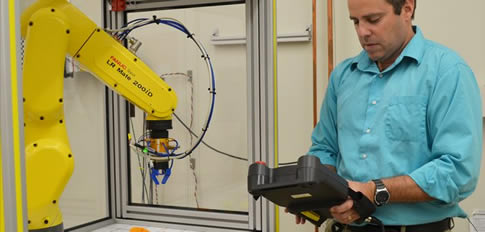Whether they’re behind the scenes assembling products or helping you parallel-park your car, robots are already playing a big role in our day-to-day lives, and their presence will only become more pervasive in the coming decades. But they aren’t good at everything—yet. For instance, robots in manufacturing don’t “think on the fly” very well.
|
ADVERTISEMENT |
In a word, their movements can be a little mechanical.
Robots do well in highly structured environments where the location of objects are known, and where all they have to do is perform the same task over and over (and over) again. Not surprisingly, you’re more likely to see robots do things like manufacture cars than you are to see them doing job shop-type operations where only a handful of similar products are being made at a given time.
…

Add new comment